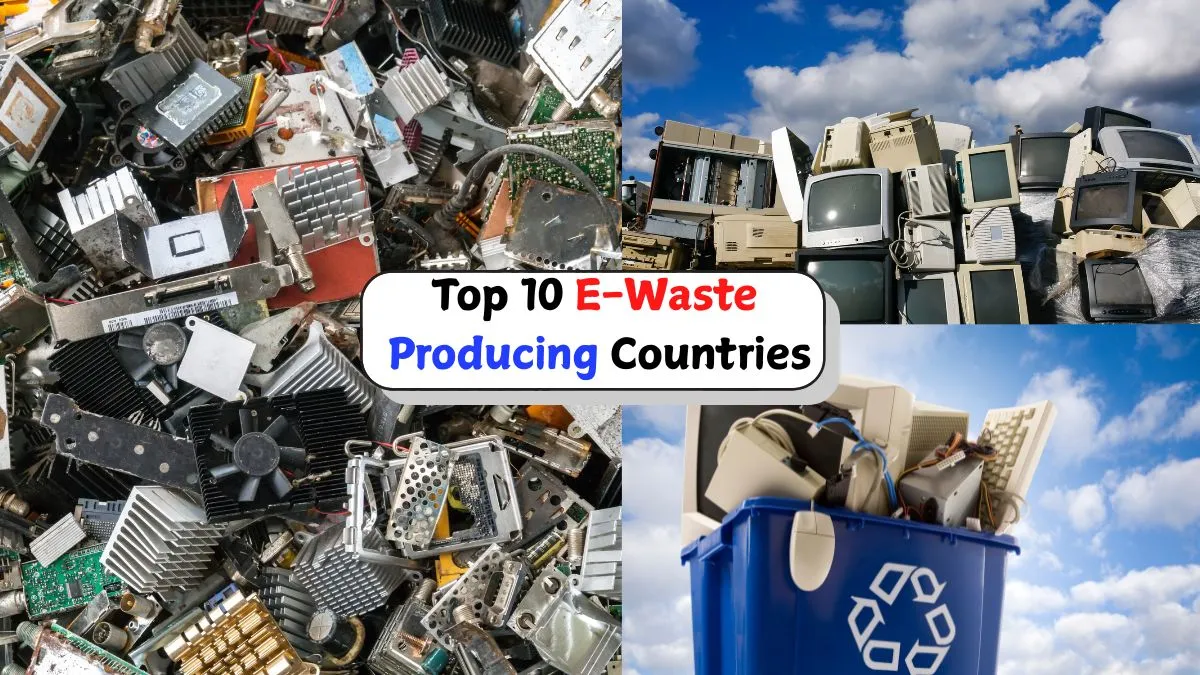- By Aditi Priya Singh
- Tue, 14 Oct 2025 01:39 PM (IST)
- Source:JND
Top Countries Producing Most Electronic Waste: With almost 60 million metric tonnes of e-waste produced annually, the world is drowning in electronic waste. According to the WHO's E-waste report, the world generated 62 million tons of electronic waste in 2022. Due to the rapid digital transformation and advancement of technology, smartphones, laptops, televisions and household appliances are being replaced at a faster rate than ever before. Even though these devices make our lives easier, improper disposal of them presents a significant environmental risk. The responsibility of properly managing this toxic waste is increasingly becoming a burden for both developed and developing countries.
International E-Waste Day reminds everyone that repairing, recycling and reusing electronics is essential to a sustainable future and not just a personal preference. Even the most technologically advanced countries in the world struggle with efficient recycling systems, and they are among the top producers of e-waste. Addressing this silent environmental crisis that affects both the environment and human health requires international cooperation.
In this article, we have discussed what electronic waste is, its types, advantages, disadvantages and more. Also, which are the top 10 countries generating the most electronic waste?
What Is Electronic Waste?
Electronic waste, or e-waste, refers to discarded electrical or electronic devices — such as old phones, computers, TVs and kitchen gadgets.
Advantages of Recycling E-Waste:
1. Recover precious metals: Recycling e-waste helps extract valuable materials like gold, silver and copper, reducing the need for mining.
2. Conserve resources: Recycling electronic waste also reduces the impact of mining and processing on the environment and conserves natural resources.
3. Reduce waste: Proper recycling of e-waste reduces the quantity of hazardous waste that ends up in landfills.
ALSO READ: Top 10 Countries With Cheapest Gold Prices In October 2025 As Compared To India
Disadvantages of Improper E-Waste Disposal:
1. Harmful chemicals: Toxic substances like lead, mercury, and cadmium are released into the environment when e-waste is not recycled correctly.
2. Air, water, and soil pollution: The soil we use for farming, the water we drink, and the air we breathe can all become contaminated by these substances.
3. Health risks: Toxin exposure from e-waste can lead to major health problems like cancer, neurological damage, and problems with reproduction.
4. Wildlife harm: Pollution from e-waste can also damage plants and animals, upsetting biodiversity and ecosystems.
| Rank | Country | E-waste Produced (Tonnes, Latest Year) | Major E-waste Type Produced |
|---|---|---|---|
| 1. | China | 12,000,000 (2022) | Small equipment, ICT devices, and household appliances |
| 2. | USA | 7,000,000 – 8,000,000 | TVs, monitors, mobile phones, computers |
| 3. | Japan | 2,600,000 (2022) | Large home appliances (refrigerators, TVs, ACs, washers) |
| 4. | India | 1,750,000 (2023) | Computer devices, screens, telecom equipment |
| 5. | Indonesia | 1,900,000 (2022) | Mobile phones, laptops, PCs (IT & telecoms) |
| 6. | Germany | 1,600,000 (2022) | Large & small household appliances |
| 7. | UK | 1,600,000 (2022) | IT & telecoms equipment, consumer electronics |
| 8. | France | 1,400,000 | Smartphones, laptops, tablets, and household appliances |
| 9. | Russia | 1,400,000 (2023) | Household appliances, batteries, ICT equipment |
| 10. | Brazil | 770,000 | Household appliances (large and small), screens |
Source: emew.com, WHO, theroundup.org
ALSO READ: Top 10 Countries With Highest Homeless Population| World Habitat Day 2025
Common Types of Electronic Waste Generated
* Small gadgets – mobile phones, tablets, cameras
* Computers and accessories – desktops, keyboards, printers
* Large appliances – televisions, refrigerators, washing machines
* Batteries and chargers – lithium and alkaline batteries
* Audio and video equipment– speakers, headphones, DVD players
* Gaming devices and consoles
* Lighting and smart home devices

